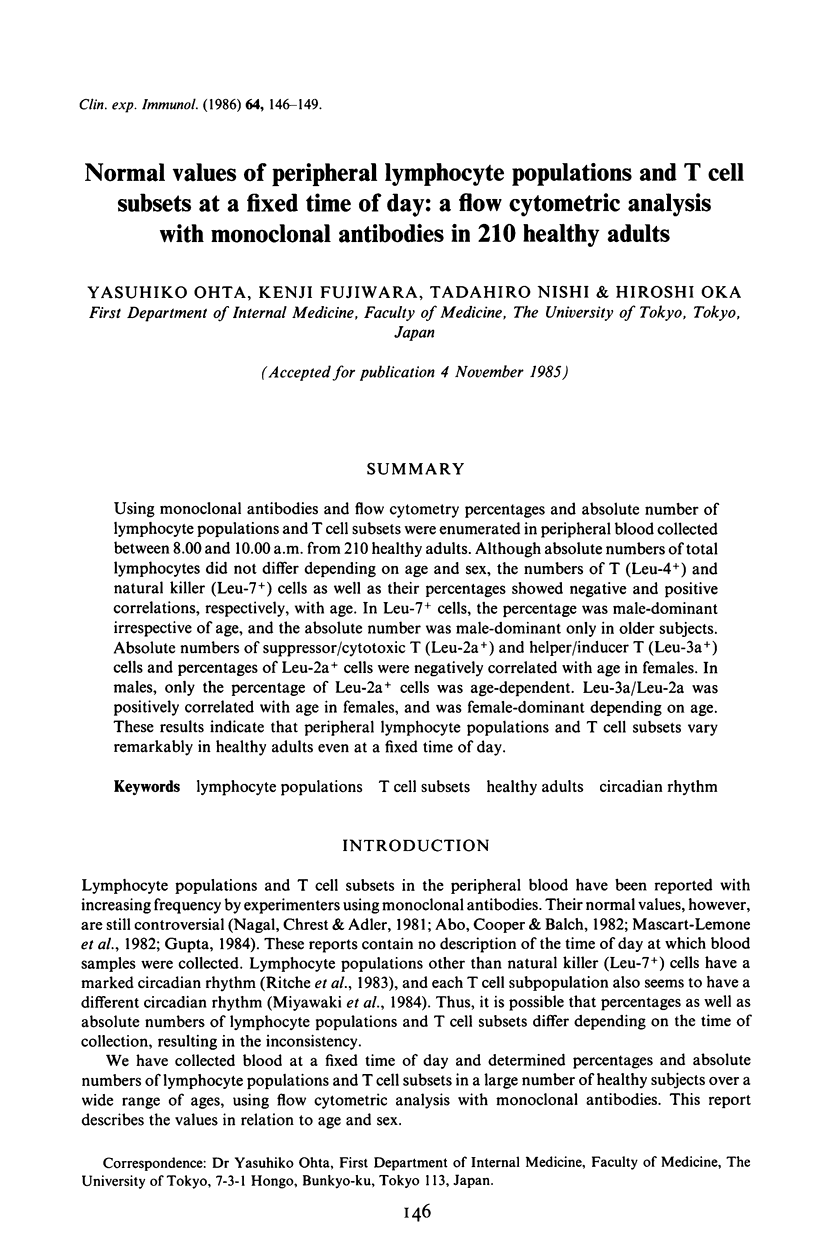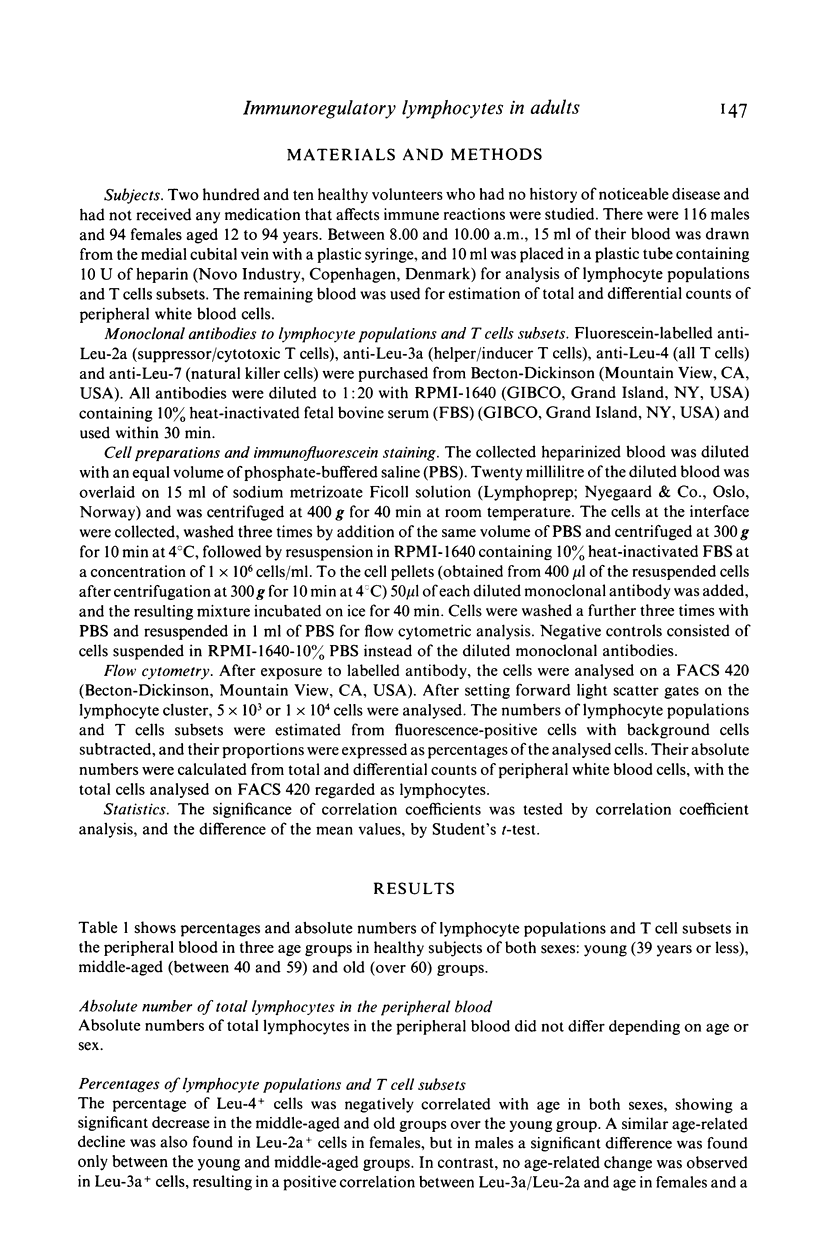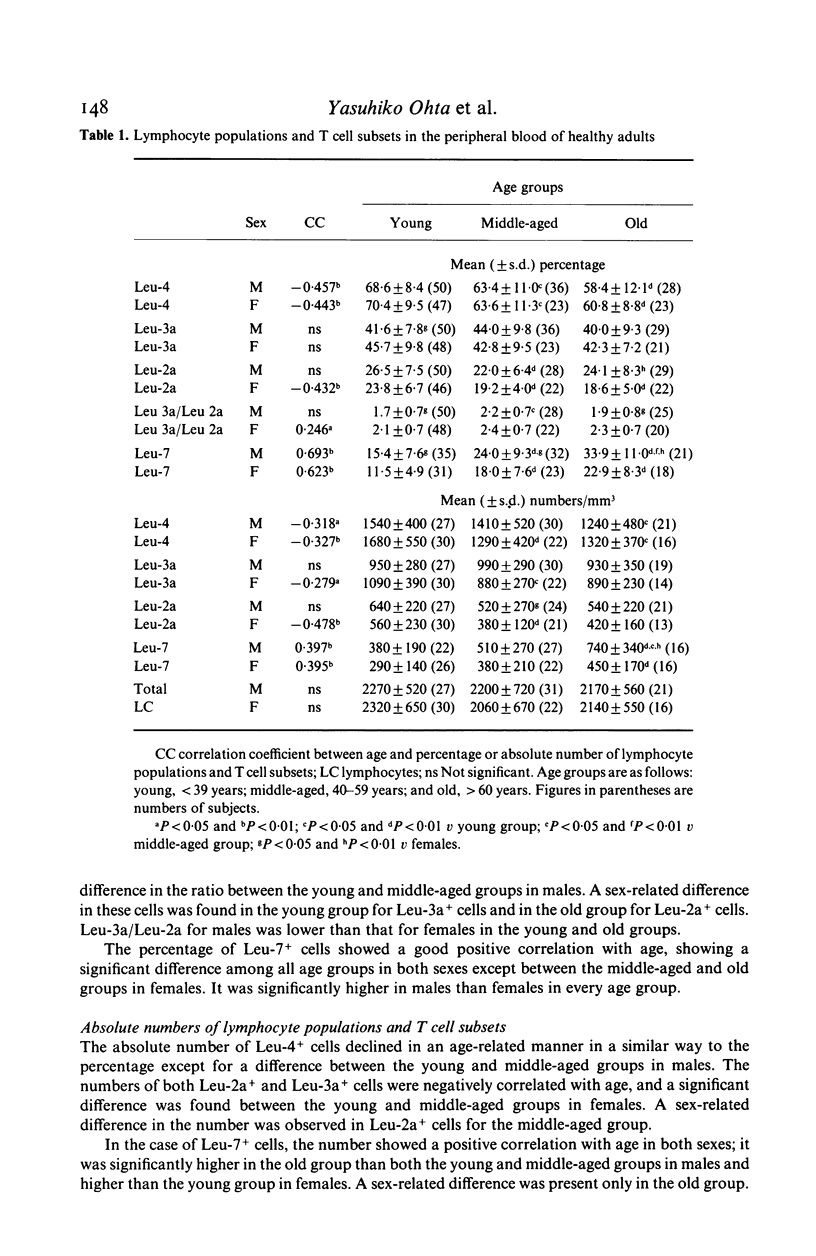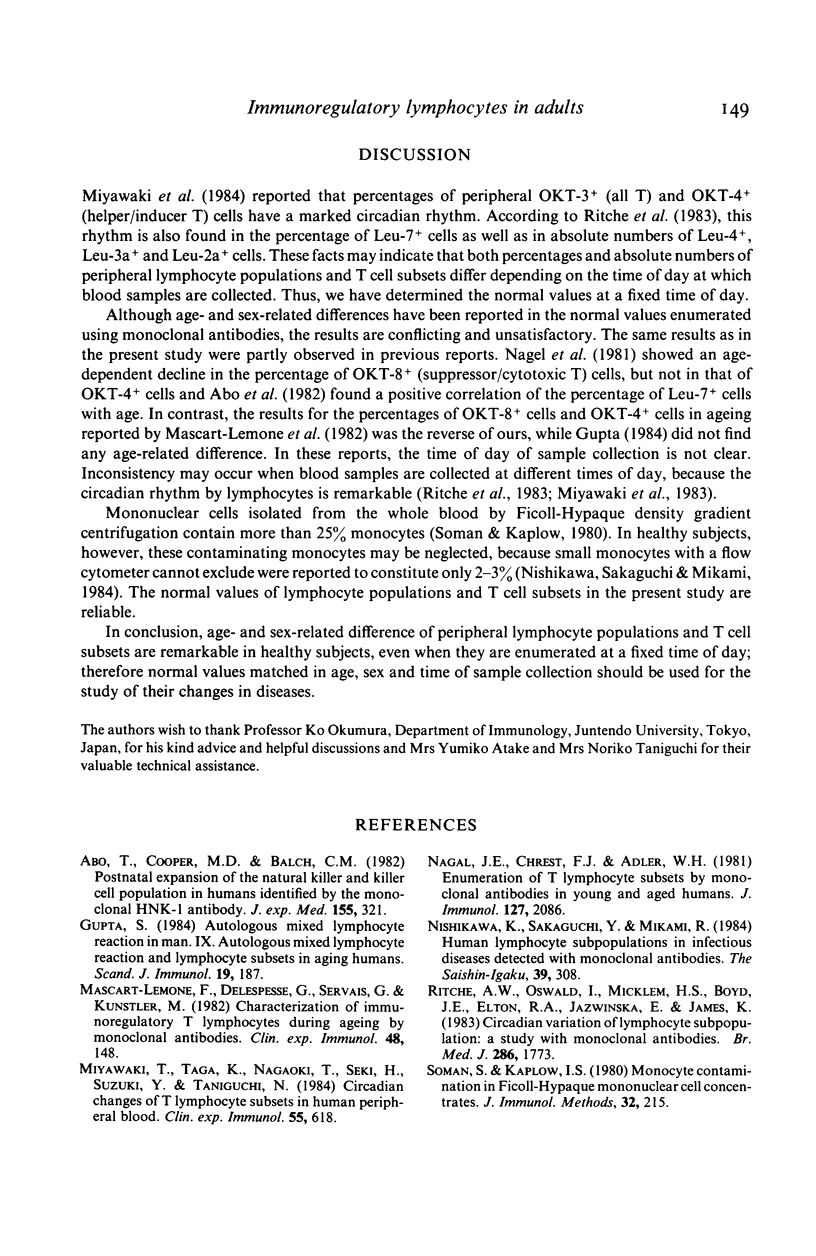Abstract
Using monoclonal antibodies and flow cytometry percentages and absolute number of lymphocyte populations and T cell subsets were enumerated in peripheral blood collected between 8:00 and 10:00 a.m. from 210 healthy adults. Although absolute numbers of total lymphocytes did not differ depending on age and sex, the numbers of T (Leu-4+) and natural killer (Leu-7+) cells as well as their percentages showed negative and positive correlations, respectively, with age. In Leu-7+ cells, the percentage was male-dominant irrespective of age, and the absolute number was male-dominant only in older subjects. Absolute numbers of suppressor/cytotoxic T (Leu-2a+) and helper/inducer T (Leu-3a+) cells and percentages of Leu-2a+ cells were negatively correlated with age in females. In males, only the percentage of Leu-2a+ cells was age-dependent. Leu-3a/Leu-2a was positively correlated with age in females, and was female-dominant depending on age. These results indicate that peripheral lymphocyte populations and T cell subsets vary remarkably in healthy adults even at a fixed time of day.
Full text
PDF



Selected References
These references are in PubMed. This may not be the complete list of references from this article.
- Abo T., Cooper M. D., Balch C. M. Postnatal expansion of the natural killer and keller cell population in humans identified by the monoclonal HNK-1 antibody. J Exp Med. 1982 Jan 1;155(1):321–326. doi: 10.1084/jem.155.1.321. [DOI] [PMC free article] [PubMed] [Google Scholar]
- Gupta S. Autologous mixed lymphocyte reaction in man. IX. Autologous mixed lymphocyte reaction and lymphocyte subsets in aging humans. Scand J Immunol. 1984 Mar;19(3):187–191. doi: 10.1111/j.1365-3083.1984.tb00918.x. [DOI] [PubMed] [Google Scholar]
- Mascart-Lemone F., Delespesse G., Servais G., Kunstler M. Characterization of immunoregulatory T lymphocytes during ageing by monoclonal antibodies. Clin Exp Immunol. 1982 Apr;48(1):148–154. [PMC free article] [PubMed] [Google Scholar]
- Miyawaki T., Taga K., Nagaoki T., Seki H., Suzuki Y., Taniguchi N. Circadian changes of T lymphocyte subsets in human peripheral blood. Clin Exp Immunol. 1984 Mar;55(3):618–622. [PMC free article] [PubMed] [Google Scholar]
- Nagel J. E., Chrest F. J., Adler W. H. Enumeration of T lymphocyte subsets by monoclonal antibodies in young and aged humans. J Immunol. 1981 Nov;127(5):2086–2088. [PubMed] [Google Scholar]
- Ritchie A. W., Oswald I., Micklem H. S., Boyd J. E., Elton R. A., Jazwinska E., James K. Circadian variation of lymphocyte subpopulations: a study with monoclonal antibodies. Br Med J (Clin Res Ed) 1983 Jun 4;286(6380):1773–1775. doi: 10.1136/bmj.286.6380.1773. [DOI] [PMC free article] [PubMed] [Google Scholar]
- Soman S., Kaplow L. S. Monocyte contamination in Ficoll-Hypaque mononuclear cell concentrates. J Immunol Methods. 1980;32(3):215–221. doi: 10.1016/0022-1759(80)90187-8. [DOI] [PubMed] [Google Scholar]


